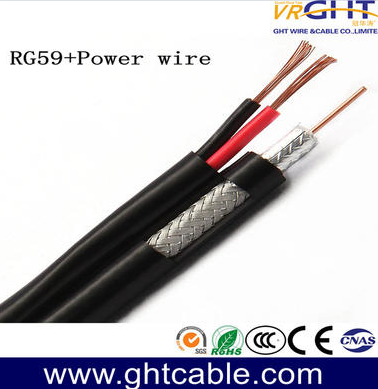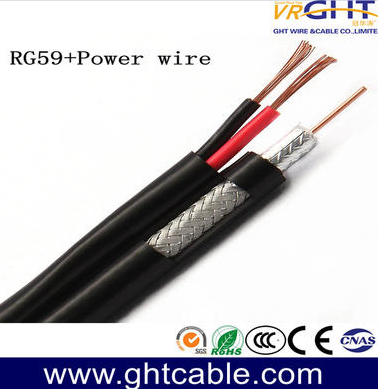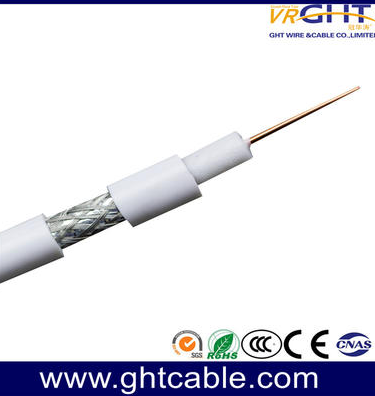
What are the Uses of the Coaxial Cable?
In the intricate web of modern communication, one unsung hero plays a crucial role—coaxial cables. These cables are the silent carriers of audio, video, and data signals, weaving connections that power our entertainment systems, internet services, and security networks. In this post, the author woule guide you to explore the coaxial able.
What is Coaxial Cable?
At its core, a coaxial cable is a specialized electrical cable designed with a central conductor, surrounded by an insulating layer, a metallic shield, and an outer insulating layer. This unique design provides enhanced signal transmission capabilities, making coaxial cables a staple in various communication systems.
What are the Uses of the Coaxial Cable?
Coaxial cables find versatile applications across various industries due to their unique design and capabilities. Here are some common uses of coaxial cables:
●Television Broadcasting
Coaxial cables are extensively used for transmitting television signals from cable or satellite providers to homes. RG6 coaxial cables, in particular, are popular for this application.
●Internet Connectivity
Coaxial cables play a crucial role in providing high-speed internet connectivity. Cable internet providers use coaxial cables to deliver broadband internet services to homes and businesses.
●Telephone Networks
Some telephone networks use coaxial cables for transmitting voice signals. While fiber optics and other technologies are becoming more prevalent, coaxial cables are still in use in certain telephone systems.
●Closed-Circuit Television (CCTV)
Coaxial cables are commonly used in CCTV systems for transmitting video signals from surveillance cameras to monitoring equipment. The shielding in coaxial cables helps reduce interference and ensures clear video transmission.
●Data Networking
Coaxial cables, especially those with higher specifications like RG58 and RG8, are used in data networking applications. They can transmit data at high speeds and are suitable for certain Ethernet connections.
●Radio Frequency (RF) Applications
Coaxial cables are widely used in RF applications, such as connecting antennas to radios or televisions. They provide a stable and efficient medium for carrying RF signals.
●Military and Aerospace Applications
Coaxial cables are used in military and aerospace applications for communication systems, radar systems, and other electronic equipment. Their durability and ability to transmit signals over long distances make them suitable for these critical applications.
●Medical Imaging Equipment
Coaxial cables are employed in medical imaging equipment, such as MRI and CT scanners, for transmitting signals between components. The shielding in coaxial cables helps prevent interference in sensitive medical devices.
●Ethernet Networks in Older Installations
In some older networking installations, coaxial cables were used for Ethernet connections before the widespread adoption of twisted pair cables. While less common today, they are still found in certain legacy systems.
●Amateur Radio (Ham Radio)
Coaxial cables are widely used in amateur radio setups for transmitting and receiving signals. They are valued for their ability to carry RF signals efficiently.
What are the Pros of the Coaxial Cable?
Coaxial cables have several advantages that make them suitable for various applications. Here are some pros of coaxial cables:
●Low Signal Attenuation
Coaxial cables exhibit low signal attenuation, meaning that the strength of the signal remains relatively stable over longer distances. This is crucial for applications requiring consistent and reliable signal quality, such as in cable television and broadband internet services.
●Signal Isolation
The layered construction of coaxial cables provides effective isolation of signals. This isolation helps prevent signal leakage and crosstalk, ensuring that each cable carries its intended signals without interference from adjacent cables or external sources. This is particularly advantageous in densely populated areas where multiple cables may be running in close proximity.
●Immunity to Electromagnetic Interference (EMI)
The metallic shield surrounding the central conductor acts as a barrier, protecting the signal from external electromagnetic interference. This feature is essential in environments where electronic devices or other sources of electromagnetic radiation might be present, ensuring a stable and interference-free signal transmission.
●Security
Coaxial cables offer a level of security due to their shielded design. The outer metallic layer not only protects against interference but also makes it more difficult for unauthorized access to the transmitted signals. This can be beneficial in applications where data security is a priority, such as in closed-circuit television (CCTV) systems.
●Compatibility with Existing Infrastructure
Coaxial cables are backward compatible with many existing systems and infrastructure. This makes them a practical choice for upgrading or expanding networks without the need for a complete overhaul of the existing setup.
●Bi-Directional Communication
Coaxial cables can support bi-directional communication, allowing for simultaneous transmission and reception of signals. This feature is valuable in applications like two-way cable internet services and video conferencing.
●Ease of Maintenance
Coaxial cables are relatively easy to maintain and troubleshoot. The modular connectors used with coaxial cables simplify the process of identifying and resolving issues, reducing downtime and maintenance costs.
Conclusion
All in all, the pros of coaxial cables extend beyond their basic attributes, encompassing factors such as signal integrity, security, and compatibility. These qualities contribute to the widespread use of coaxial cables in diverse communication and transmission systems. Coaxial cables continue to be a foundational element in our interconnected world.









Leave a comment